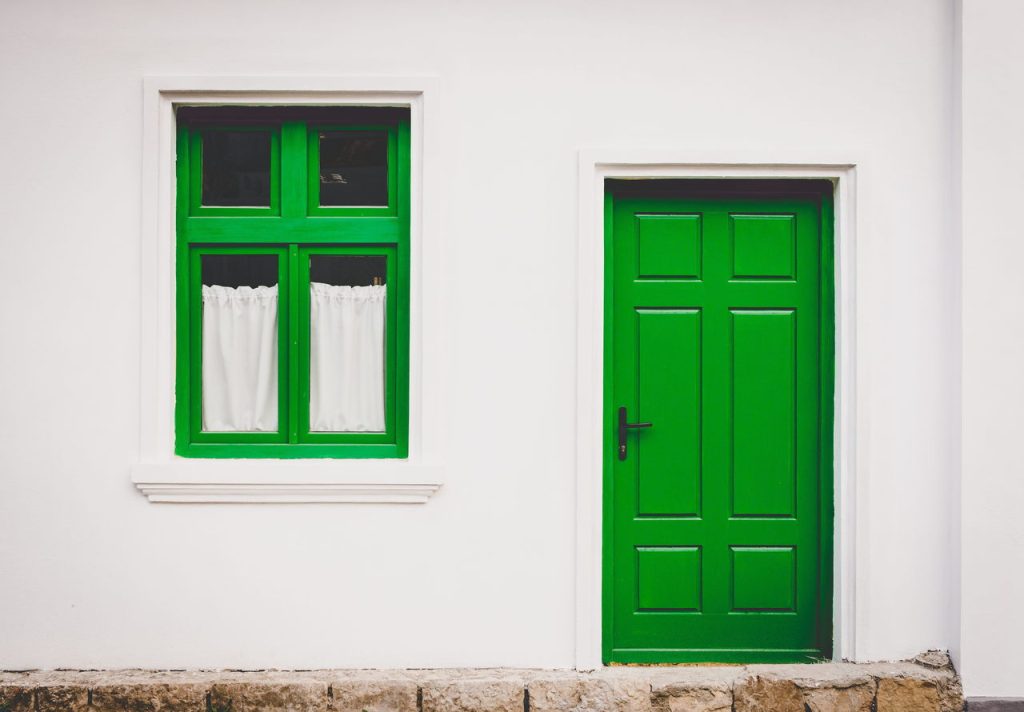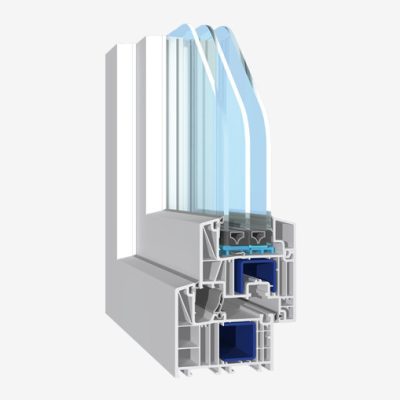
A perfectly matching front door will not only be comfortable to use, but also a unique showpiece of the house. The choice should be carefully considered, a decent door should be weatherproof, provide thermal and acoustic insulation, have an anti-burglary function and look aesthetically pleasing.
What size door should I choose?
Regulations clearly define the minimum dimensions of entrance doors. These values are assumed for the opening after the frame has been installed – 90 cm wide and 200 cm high. The opening for the door should be about 12-15 cm wider and 6-7 cm higher than the smallest dimensions. Entrance doors can open both inwards and outwards, as is the case with single-family homes.
An important function of the front door is thermal insulation. With such a large surface area, heat loss is very high. The door panel should be insulated. According to Polish law, the heat transfer coefficient for front doors is a maximum of 2.6 W/m2K. The lower this coefficient, the less thermal energy escapes from the rooms. This also reduces the building’s heating costs – less energy wasted and “released” through the door results in a higher indoor temperature. It is therefore worth investing in doors with the lowest possible coefficient.
What else is important besides thermal insulation?
The front door should also protect against wind, rain and snow. The basic parameter determining watertightness is the symbol from 1A to 9A. The higher this coefficient, the better the protection. It should not be lower than 2-4A.
Sound insulation is very important, especially when the house is built close to busy roads and streets. The coefficient determining this is Rw, expressed in decibels – the higher it is, the better the insulation. Thermal insulation such as polystyrene or polyurethane foam fulfils the function of soundproofing. Other soundproofing solutions include double glazing or soundproofing panels. The standard sound insulation level is 30 dB, which varies depending on the material the door is made of.
Entrance door materials
There is a huge selection of front doors on the market in every colour, size, shape and made of many different materials. Doors are made of wood, hardened PVC, fibreglass, steel and aluminium:
- Wood – the frame of the wing should be made of glued laminated timber. They are often made of pine or spruce, but ash, beech, oak or exotic mahogany are also worth considering. Cheaper wood-based materials are an alternative. Wooden doors provide excellent acoustic and thermal insulation and have low thermal expansion. The disadvantages are that they are sensitive to changes in humidity and require impregnation or painting.
- PVC – a plastic material, doors are made of high-impact, hardenable plastics, reinforced with steel or aluminium inserts. The surface is covered with foil, veneer or acrylic coating. Polyurethane foam is used in the frame for better thermal insulation. They are great at absorbing sound, insulating heat, being flame retardant, lightweight and easy to install, and require no maintenance other than washing. They are characterised by their low price. The disadvantage is that they need to be replaced when damaged.
- Aluminium – a system of multi-chamber profiles made of aluminium. The frames and filling are made of powder-coated anodic metal. They have high sound-absorbing properties, are durable and have a rigid structure. The disadvantage is their low resistance to damage and mechanical deformation, and a design more suited to modern than traditional architecture.
Read also:



